New Study Links Microplastics to Human Health Problems
Microplastics – tiny pieces of plastic less than 5 mm in length– are now found everywhere on the planet. They are in the air, in the water and even in the soil of our farmlands, transported there as fertiliser from water treatment plants. There’s hardly a place on Earth untouched by these microscopic particles, which are shed from the vast array of plastic items used in societies worldwide, including food packaging, car tires, water bottles, textiles… the list goes on.
For years, Take 3 for the Sea has been raising the alarm about the harm microplastics can do to marine wildlife, and we are all familiar with the heartbreaking photos of dead seabirds and turtles, killed after mistakenly ingesting tiny pieces of plastic that block their intestines resulting in a slow death by starvation. Yet, while the impacts on marine life have been extensively documented, less attention has been paid to the potential consequences for human health. It is thought microplastics can cause harm to the human body in two main ways – mechanically, by blocking our respiratory, circulatory or digestive systems, or chemically, by disrupting the normal workings of the body’s systems, such as the endocrine or reproductive systems. Both microplastics and nanoplastics (size) have been found in the human body, in the blood and even in placentas but little is known about their impact on human health. But perhaps that is about to change.

A new study published by the New England Journal of Medicine has, for the first time, demonstrated a link between microplastics and human health. According to Nature, the study examined 250 people undergoing surgery and found that nearly 60% had microplastics or nanoplastics in a main artery. Those who did were 4.5 times more likely to experience a heart attack, a stroke or death in the three years after surgery than were those whose arteries were plastic-free.
While this sounds unequivocal, the study’s authors are advising caution, emphasising the absence of a causal link between the microplastics and the adverse health outcomes. It’s possible that other factors, such as socio-economic status, could be causing ill-health rather than the plastics themselves. That is, the presence of microplastics in the arteries could be a symptom rather than a cause. Nonetheless, this study serves as a catalyst for further research to corroborate the findings and further explore the degree of risk that micro- and nanoplastics pose.

What Can I Do?
The presence of microplastics in our environment underscores the unintended consequences of decades of overconsumption and mismanagement of plastic. As a systemic, global issue, individual efforts to mitigate the impact of microplastics may seem futile. Yet, reducing our plastic footprint remains a vital step towards addressing this challenge. The less plastic we consume, the fewer microplastics will end up in the environment, safeguarding both environmental and human health.
As stewards of our planet, it’s incumbent upon each of us to reduce our plastic footprint. If we all opt for reusable alternatives such as keep cups and paper straws and support plastic-free initiatives, we can collectively reduce the proliferation of microplastics in the environment.




